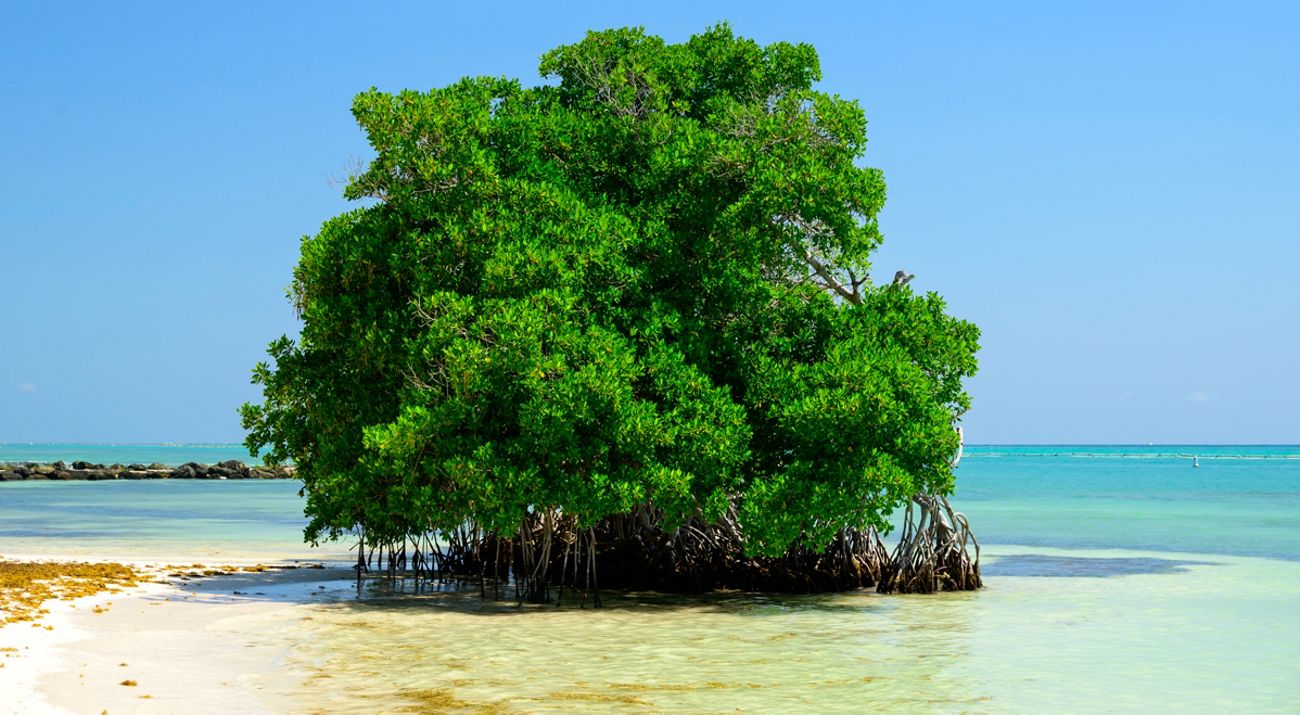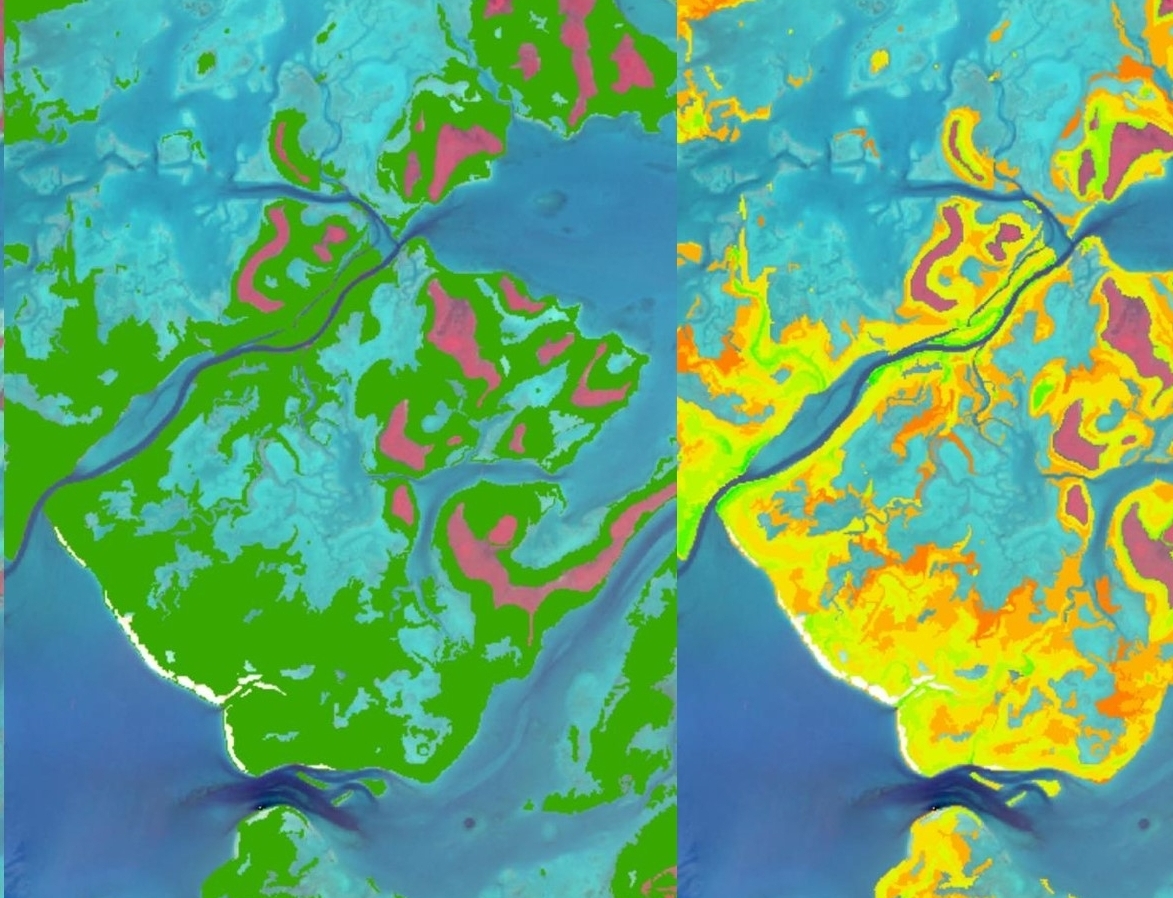
Mangroves of the Caribbean: Vital Protectors of Reefs, Seagrass and Coastal Economies
Exploring how Caribbean mangroves safeguard marine ecosystems and communities.
Mangroves are home to hundreds of species, natural buffers against disasters and one of the world's most effective natural carbon capture systems. One could be forgiven for thinking that mangroves have superpowers to withstand changing tides, fluctuating ocean temperatures and climate variability in the Caribbean, but the reality of these rooted ecosystems is more intricate than what lies above the region’s crystal clear waters.
On a world scale, mangroves in the Caribbean region make up approximately 12% of the global population and protect hundreds of endemic species of fish, other marine species, insects and plants. Besides marine species, the birds and mammals that rely on these marine insects and fish indirectly depend on mangrove ecosystems. With the high land-to-water ratio in the Caribbean, it is not surprising that the presence of mangroves heavily influences the health of the shorelines of multiple countries, as well as their local economies and communities. Without healthy mangroves, adjacent reefs and seagrasses are not well protected, posing challenges to species that the fishing industry heavily relies on like the Queen Conch, spiny lobster and Atlantic blue crab.
Mangroves, seagrass beds and coral reefs work together to protect each other. By preventing erosion from the shore and slowing freshwater flow to the region’s coral reefs, they protect these delicate ecosystems and preserve water quality. Animals and fish living in seagrass beds and reefs can also enjoy a cleaner environment because of their filtering qualities. These important functions are part of the reason TNC teams created the Blue Carbon Explorer, an open-access tool to analyze changes in biomass, extent, canopy height and protection status of coastal wetlands in the Caribbean, Papua New Guinea, and Indonesia. Mangrove protection is especially significant in the Atlantic region because of its large capacity of carbon storage and how susceptible many Caribbean countries are to climate change-related disasters. The Blue Carbon Explorer tool allows scientists to prioritize the restoration and conservation of coastal wetlands in the Caribbean based on scientific needs. This allows the prioritization of highly affected areas in areas with limited infrastructure.
Quote: Valerie McNulty
“This tool identifies opportunities for mangrove restoration and protection aimed at enhancing blue carbon storage. It uses extensive satellite imagery to help conservationists better understand long-term trends in habitat health so that they can identify and address possible causes of degradation.”

While many countries in this region rely significantly on tourism for economic growth, they also heavily depend on commodity exports like commercial fishing, seafood and agricultural exports. Caribbean agricultural exports, such as coffee and sugar, reap the benefits of protection by mangroves as they help prevent coastal flooding and surges during storms. The agricultural industry employs around 11% of the Caribbean workforce, and frequent storms, floods and rising tides can jeopardize the limited land and freshwater reserves these countries have access to. This further validates the importance of mangroves as safeguards for industries both on land and water. TNC’s Blue Carbon Explorer allows for the conservation of areas with high carbon storage potential and vulnerability to climate change.
Mangroves are crucial for their ecological, economic and protective roles. Serving as habitats for marine and terrestrial species, their importance in this region’s beautiful coasts is highly significant. Supporting fisheries, tourism and biodiversity makes them vital to the protection of the Caribbean coasts, communities and families. They help mitigate climate change through their root systems, filter pollutants from water and create a safe environment for endemic species, while allowing local economies to thrive.
We Can’t Save Nature Without You
Sign up to receive monthly conservation news and updates from the Caribbean.



